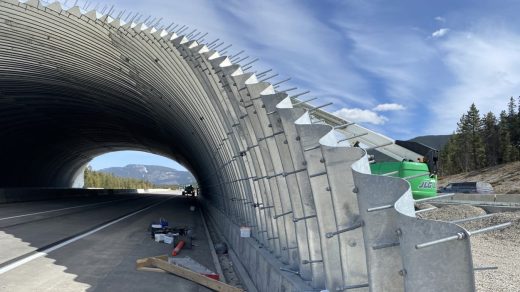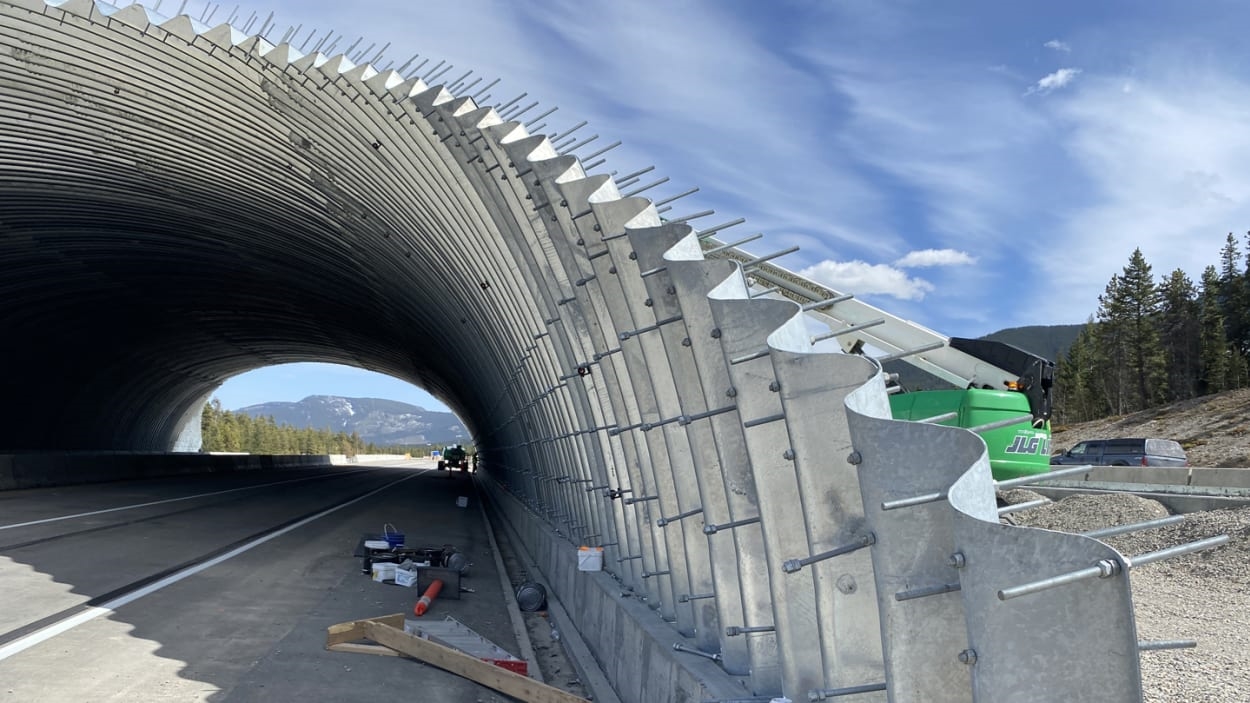These massive steel arches will soon be a bridge for bears, elk, and other wildlife
If you drive on the Trans-Canada Highway west of Calgary—through the Canadian Rockies, with forests lining each side of the road—you’ll see a massive steel arch under construction. It will soon be the newest wildlife crossing in the area, designed to help bears, elk, the occasional bighorn sheep, and other animals make it over four lanes of high-speed traffic.
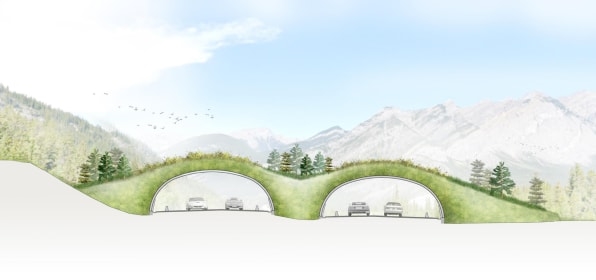
For Dialog, the design firm behind the initiative, it’s the seventh project of its kind. More are likely to follow, especially as climate change makes more animals move to reach cooler areas or to escape disasters like wildfires. “There’s two pressures that are working in tandem,” says Jill Robertson, a landscape architect and partner at Dialog. “One is that humans are continuing to expand our impact on the world. So, roads are getting wider, and traffic is increasing, which is putting increased pressure on wildlife. Then that’s exacerbating the impacts of climate change.”
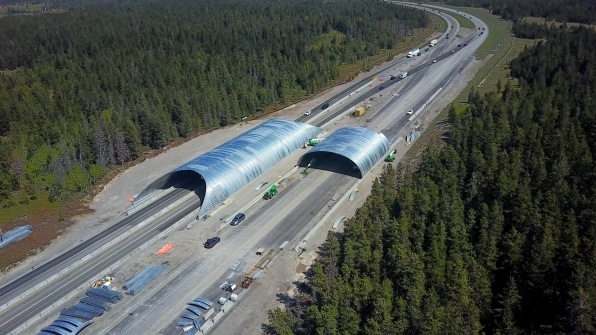
When the company worked on its first crossing in Banff National Park nearly three decades ago, it wasn’t yet clear how well the system would work. Some scientists were skeptical that animals would actually use the structures. But the first large crossing, along with a network of other overpasses and underpasses in the park, dramatically reduced accidents.
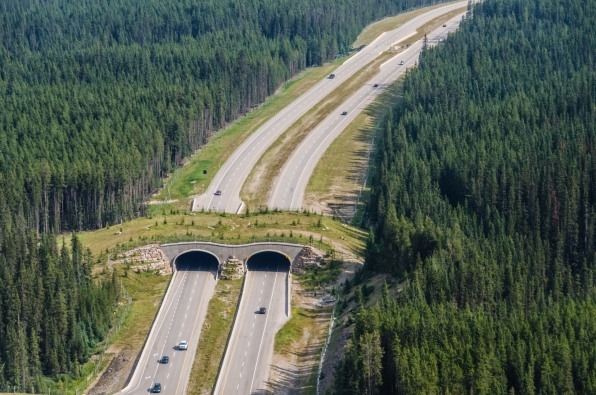
Before the changes, for example, around 100 elk were killed in collisions each year in the park; that rate has dropped to almost zero. It’s also much safer for humans, since drivers might not survive a crash with a 700-pound elk or grizzly bear. Other studies have found that having the crossings in place can help boost genetic diversity as more animals make it across roads.
To make the crossings effective, the team mimics the surrounding environment as much as possible. When the steel arches are completed at the newest crossing, near a large park called Bow Valley, a thick layer of soil will be added on top of the arches and planted with bushes and trees. A grove of spruce trees, lodgepole pines, and aspens will connect to a more open grassy area with logs and boulders and smaller shrubs for smaller animals to hide.
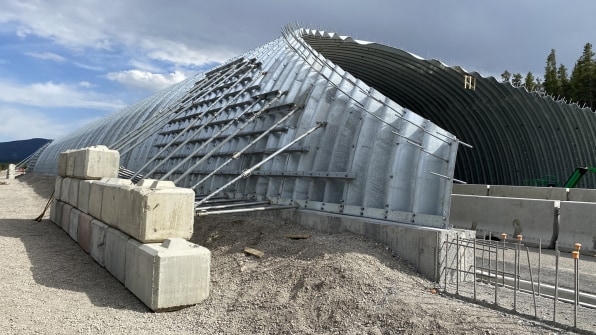
“One side of the bridge is going to be higher than the other side of the bridge,” says Robertson. “So, there’s a lowland condition and upland condition. We’ve tried to mimic that in the planting design so that really feels like on day one it has been there, and then as it grows over time, it will continue to mature and feel like a natural, functional part of the ecosystem.”
The wider the crossing, the better, she says, though projects have to balance the cost with the desire to make the structure look natural; most crossings they’ve worked on have been nearly 200 feet wide. (While the cost of each project varies, the current crossing is expected to cost less than $12 million USD, with the government of Alberta footing the bill.) With more room, more plantings can be added at the sides to help screen the noise from the highway and hide the lights from passing cars at night.
After transportation officials identify a hotspot for wildlife accidents and decide to build a crossing, the company works with a broader team, including biologists and traffic engineers, to find the best location for an overpass. The topography of the land sometimes means that animals already tend to cross at a particular place, for example, following the path of a river through a valley. “If there’s natural migration patterns or natural paths for them to take, that’s all the better,” says Neil Robson, a structural engineer and partner at Dialog. Fences are also added along the road to help guide animals to the bridge.
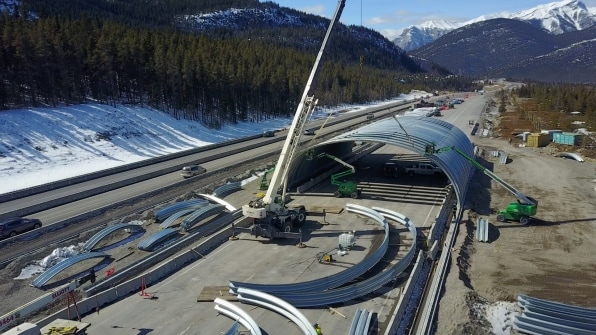
Smaller animals are more likely to use a crossing first. “We’ve learned over time is that in the initial years, the bigger animals are less likely to use it because the plants are smaller,” says Robertson. Larger trees take time to mature. “That aligns with the animals learning to use it as part of their migration patterns,” she says. “So really, the best way to encourage use for those bigger mammals is just time for it to grow and evolve and adapt like a natural landscape does.”
Construction on the arches will likely finish in October—the end of Canada’s short construction season—and depending on the weather, planting may not begin until next year. Other projects in the area are also underway. In British Colombia, a large crossing is in progress, with a combination of underpasses and overpasses. “It’s a no brainer in some places, but I’m not sure why it hasn’t really gone to scale as a solution,” says Clayton Lamb, a wildlife scientist working on the project. Ideally, he says, there should be a much larger network of crossings. “I think we want to look at a continental scale where the key movement corridors are,” he says. “Those are the key areas that will facilitate movement under climate change.”
(10)

